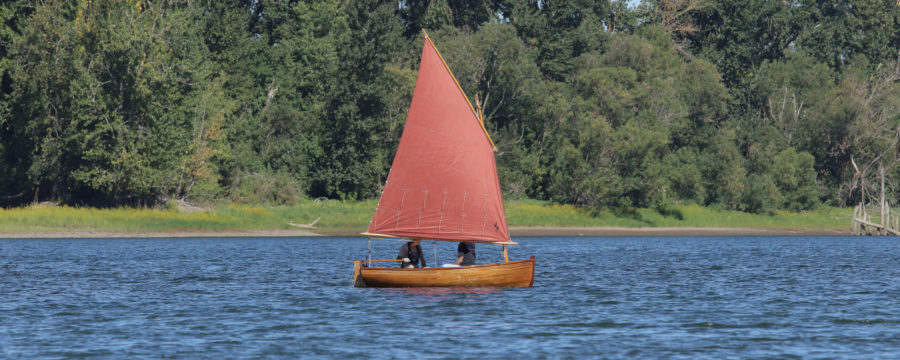Long before the fine sand and exquisite light of St. Ives were discovered by artists and tourists, the small town on the north coast of Cornwall was a thriving fishing center. At its peak, 300 fishing boats were moored cheek by jowl inside its picturesque harbor and millions of fish were landed, salted, and then exported all over Europe. Each of these boats had a tender and, as the tide went out, each tender had to settle on the sand until it was refloated by the incoming tide, twice a day, every day. Most days, the boats were given a good beating by the notorious ground sea that runs into the harbor, and on bad days they often got swamped and filled with sand. It’s a particular kind of punishment that requires a certain type of boat, as retired physician Scott Bowring discovered.“When I started sailing in St. Ives 12 years ago, I wanted a boat to keep in the harbor, so I had a 10′6″ Lily-class dinghy built for me by Ashley Butler in Dartmouth,” Scott says. “ZEPHYR is a lovely boat, and I’ve had loads of fun on her, but she was too lightly built for the conditions in St. Ives, and at the end of every season, a couple of ribs would be broken. I realized I needed something stronger for the conditions here.” The mainsail, rolled around its yard, fits neatly to one side and below the level of the gunwales, leaving the center free for a rower and a passenger or two. Photographs by the author
Photographs by the author
Join The Conversation
We welcome your comments about this article. If you’d like to include a photo or a video with your comment, please email the file or link.
Comments (8)
Leave a Reply
Stay On Course





























Great looking boat, purpose built and versatile. Where does the tack downhaul connect?
Kent
PS I love the story of how the St. Ives Jumbo Association wanted to build the Luggers but started with the punt first. Smart!
Thanks for your comments, Kent. To avoid using unnecessary fittings, a line from the tack passes down the for’ard side of the thwart, around the mast beneath and back up to the tack where it’s made off.
The Jumbo Association story is comprehensively covered by Nic Compton in last Sept/Oct issue of WoodenBoat: “The St. Ives Jumbo: A small boat with a big name'” though I appreciate your interpretation!
cheers
Jonny
Lovely looking craft, well thought out and built, very similar lines to a 10 ft dinghy I owned about 55 or so years ago. Very rugged and stable little craft and great fun to sail. I had some great times in that one.
Thanks, Douglas. Sounds as if you would know. How was yours rigged?
Jonny
Looks like a smaller Ilur, without the centerboard.
Hi Peter,
You’re right—at least above the waterline, or possibly more like the Aber? Hardly surprising as all three are derived from similar traditional craft and designed for a similar purpose. The characteristic raking mast is the only way to achieve an efficient standing lug with a near vertical luff.
The lack of a centerboard obviously does effect windward performance but not to the extent one might expect and in windy conditions, with the extra weight of a second crew member, she sails to windward very well. Beating back to Cowes from Osborne Bay on a windy afternoon during the Old Gaffers Association regatta this summer, all the small boats, with the exception of MAIA, kept inshore out of the worst of the blow. MAIA stayed out, always felt safe, and outsailed all the boats of comparable size and several somewhat larger.
My punt was the first of Jonny’s sailing punts to be built. When we launched her in 2014, I was amazed by how well she performed. Sailing, rowing and sculling are all a delight. Jonny made me some 7’6″ oars for her and, with such an easily driven hull, she can be rowed comfortably for quite a distance without strain. My sail is slightly smaller than MAIA’s above, but she sails just as fast.